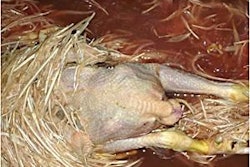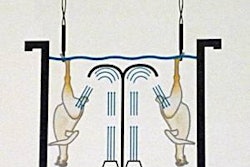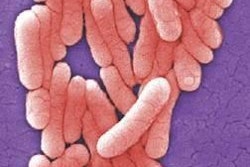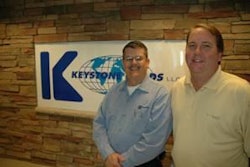Modern poultry processing may be highly automated, but it is still dependent on a properly functioning workforce.
With this in mind, it is essential that processing plant managers are fully aware of how ergonomics impacts on worker performance along the various stages of the processing line and achieve the correct balance between plant operating costs and the needs of the personnel that allow its function.
Ergonomics can be defined as the adaption of the working environment where an employee performs his or her function, resulting in comfort, natural levels of fatigue, and ultimately the greatest possible efficiency.
Each and every function along the processing line has its own particular needs and requirements. Once these have been identified, judgments and changes can be made with regard to ergonomics.
With the above in mind, consider the following aspects between the receiving area and slaughter:
Light levels
Given that birds need to remain calm as possible while still in cages and while during removal from them, blue light can be used, as birds do not register UV light rays, yet human vision is maintained.
Noise and dust
Given that workers are in enclosed areas, there has to be a continuous air exchange to reduce dust. Because of this, ventilation systems and/or extractors must be installed.
Birds’ skin and feathers are covered with dust from being in constant contact with litter in the poultry shed. Birds will flap when being hung onto shackles, and if workers are not given the correct protection, either personal or environmental, then their health can be put at risk.
Fecal contamination
Under stress, many chickens defecate. Removing these birds from cages and hanging them onto the conveyor represents a risk to workers. Workers must protect their faces with appropriate masks to prevent contamination.
Removal of chickens from cages
Delivering cages to the hanging area slightly tilted will result in birds being closer to the cage opening. This will save workers having to struggle to get them out and would offer them a little more time to hang them with proper care.
Injury risk from broken cages
Daily wear and tear, along with careless handling, will gradually reduce the strength of cages and result in breakages and splits. Without careful checking during the loading process on farm, broken cages will find their way to the processing plant. A broken cage represents a risk not only for the worker who must put his or her hands into the cage to catch the birds but also for the birds themselves during transport and on removal.
Stress levels
The pressure of having to fill each and every shackle to maintain workflow can result in stress. While the rhythm should not be lost, stress levels can be reduced through listening to music.
Slaughter
Worker comfort is a necessity to perform this delicate operation to ensure that only the blood vessels are cut, leaving the trachea and cervical nerves intact. To achieve this, workers should be able to stand or sit comfortably, depending on their level of tiredness. Any seat must be adjustable so that workers can find their find ideal working position.
Evisceration
Traditionally, to remove the intestinal package, the worker holds the bird with one hand and introduces the other into the abdominal cavity. When birds are particularly large, additional effort is needed, which speeds fatigue. Special supports are available to reduce worker fatigue, thus raising output per worker.
Gizzard processing
There is no perfect feed withdrawal period, and the majority of birds are subjected to long withdrawal periods. The result of this is greater adherence of the gizzard and need of more effort to remove it, tiring workers’ arms and hands. Using warm water, however, can make the job easier and increase worker yield.
Hanging on the drip line
To achieve a satisfactory performance in terms of birds per hour and to avoid bottlenecks, two areas in particular need to be considered. Birds must always be delivered to the worker at the same spot, and workers must take them with both hands, hanging them on a line that is within easy reach to avoid fatigue.
Cutting up and deboning
The best way to carry out cutting up and deboning is manually, using fixed and moving cones. The type of knife used to perform these tasks should be changed depending on the type of cut to be made. This not only maximizes yield but makes the life of the worker easier. However, in many plants this is rarely taken into consideration.
Moving carcasses to the cooler
In some plants, small two-wheel carts are used; however, this puts weight onto the operator’s arms. Four-wheel carts, however, that can simply be pushed or pulled are less tiring.
The various operations described above impact both the worker and yield. They can be summed up as a failure to properly consider the height levels of various operations, poor illumination, a failure to follow proper working methods, along with a failure to supply the most appropriate equipment.
Not properly addressing any of the above can lead to work-related illnesses. This type of illness is not simply unpleasant for the individual affected, but increases the costs of the plant, and ultimately the price per kilo of meat produced.















